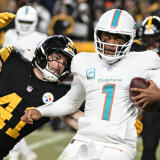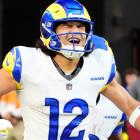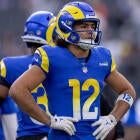NFL Week 2: How will the Packers slow the Falcons' passing attack? Good question
The Packers had no answer for the Falcons offense last year. Will Sunday be different?
The 2016 Atlanta Falcons were damn near unstoppable offensively. They gained more yards than all but 12 teams in NFL history and scored more points than all but seven. They gained more yards on a per-play basis than all but three teams in the history of football and they actually scored more points per drive than the record-breaking 2013 Broncos (2.90 to 2.83). Along with the 2007 Patriots and the 2011 Saints, they were one of just three teams since the league expanded to 32 teams in 2002 to score a touchdown or field goal on more than half of their offensive drives.
It should come as no surprise, then, that in two games against a Green Bay Packers defense that was largely below average for much of the season, the Falcons lit up the scoreboard but good. Atlanta scored 33 points in a last-minute comeback victory in Week 8, then racked up 44 in the NFC Championship Game on the way to clinching a Super Bowl berth. Considering the Falcons averaged 36 points per game in the Georgia Dome, where both of those games were played, again, it was not all that surprising that they hit 38.5 per game against Green Bay.
What was surprising about the two performances is that the Falcons tore up Green Bay's defense -- specifically, their pass defense -- in drastically different ways.
Winning by going short
In Week 8, the Falcons attacked almost entirely via the short pass. Matt Ryan threw 35 passes during the game; 27 of them were intended for receivers within 10 yards of the line of scrimmage, and six of those 27 were screens thrown behind the line, per tracking data from Pro Football Focus.
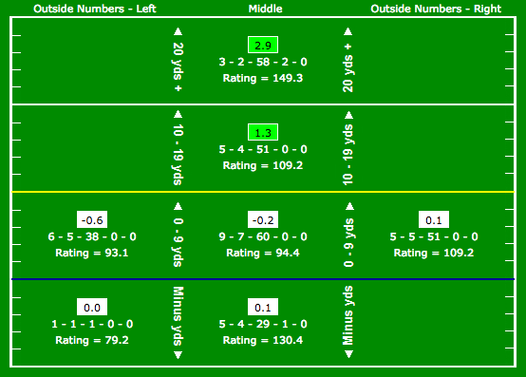
Many of those passes were thrown to receivers that ran quick-breaking routes after Ryan motioned a running back out of the backfield, leaving the Falcons in an empty set. Doing so forced the defense to declare its coverage, allowing Ryan to identify the man that would come open before the snap of the ball, and then get it to him quickly afterward. He completed all six of his pass attempts when the Falcons motioned into an empty set, gaining 52 yards.
On another play he evaded the rush and scampered up the middle for a 10-yard gain.
The main beneficiaries of Atlanta's quick-game strategy were Mohamed Sanu (nine catches, 84 yards, TD), Austin Hooper (5-41), and Devonta Freeman (4-23-1). Ryan barely looked in the direction of Julio Jones, who caught three balls for just 29 yards on his five targets.
Winning by unleashing Julio
The rematch in the NFC title game saw the Falcons take a far different path. There was still a healthy dose of short, quick passes, but Ryan also pushed the ball down the field far more often. Of his 38 passes, 14 of them were intended for receivers at least 10 yards beyond the line of scrimmage, compared to only eight of 35 in the first matchup.
Much like the first game, Ryan was electric when he did throw the ball downfield: 8 of 14 for 193 yards and a touchdown.
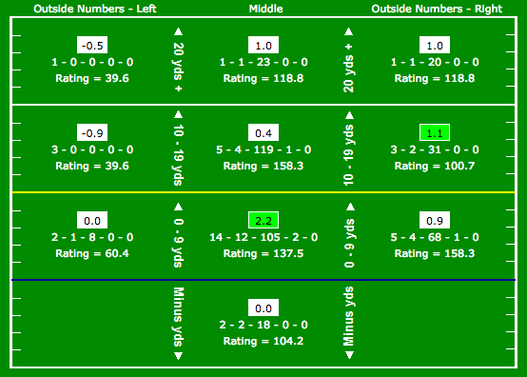
Many of those passes were intended for Julio Jones, to whom the Falcons funneled the football in a matchup against Ladarius Gunter after rarely targeting him in the teams' first matchup. To say it was a mismatch would be the understatement of the century. Gunter -- who had been lit aflame by the Cowboys' Dez Bryant the previous week, only to be bailed out by a miraculous end-of-game throw from Aaron Rodgers to set up a game-winning field goal as time expired -- simply had zero chance against Jones.
Julio lit the Packers on fire with nine catches for 180 yards and two touchdowns, with eight of those catches, 176 yards and both scores coming with Gunter in coverage.
What's on tap this time around?
Why is all this important now, months later? Well, because the Falcons and Packers will play in Atlanta yet again on "Sunday Night Football" this weekend, this time in the brand new Mercedes-Benz Stadium. And so it's obviously worth asking whether the Packers are any better-equipped to slow down Ryan, Jones, Sanu, and the rest of the Falcons' explosive passing game.
Right off the bat, there are a few factors working in Green Bay's favor that should help the Packers in this go-round.
First, Kyle Shanahan, the architect of the 2016 Falcons offense, is now the coach of the San Francisco 49ers. There's obviously more than enough talent on hand for the Falcons to remain an elite offensive unit -- you don't become the eighth-highest scoring offense of all time just because of a play-caller -- but as we saw last week against the Bears, it could take the team some time to get into a rhythm with new offensive coordinator Steve Sarkisian. They're not firing on all cylinders just yet, at least based on their Week 1 performance.
Second, Ladarius Gunter is now a member of the Carolina Panthers, so he's no longer around for Julio Jones to mess with. (I feel bad picking on Gunter, both because we share the same alma mater and because he actually played fairly well for Green Bay through much of last season; but he was absolutely roasted by Julio in the NFC title game, and so it's good that the Packers will not be showing him the same look this time around.) Longtime Packer Davon House is back, having returned after a stint with the Jaguars, and Green Bay's Week 1 game against the Seahawks saw Quentin Rollins and safety Kentrell Brice step into expanded (i.e. near full-time) roles as well.
And third, linebackers Jake Ryan and Joe Thomas, victimized so often by Devonta Freeman, Tevin Coleman, and Austin Hooper in coverage a year ago, played just 11 combined snaps against Seattle, with Brice and Blake Martinez largely usurping their roles. All of those personnel shifts should help the Packers deal with the monster they're about to run up against.
Not only that, but the Packers appear better-equipped to get pressure on Matt Ryan than they did a year ago. Ryan was sacked, hit, or hurried by Green Bay on only 20 of his 78 drop backs last season, a rate of 25.6 percent. That was far south of the NFL average of approximately 33 percent, and even farther south of the 39.4 percent pressure rate the Packers recorded in their Week 1 matchup against the Seahawks.
Seattle's offensive line is something resembling a joke and Atlanta's is much better, but it did appear to have a weak link. New starting right guard Wes Schweitzer, taking over for the departed Chris Chester, allowed a sack, a hit, and a hurry of Ryan in Week 1. The rest of the line combined to allow just one hurry, while two missed blocks by Devonta Freeman resulted in two more. In other words, just as much pressure was generated on Ryan simply by men Schweitzer was attempting to block as was generated by all other Bears combined. The Packers used Mike Daniels to bludgeon Seahawks left guard Luke Joeckel into submission in Week 1, and it would not be at all surprising if Daniels slid over to the opposite guard to rush the passer this week.
All that said, the Packers still do not have anyone in their secondary capable of matching up with Julio Jones one-on-one. With Falcons coach Dan Quinn stating earlier this week that the team needs to do a better job of getting the ball into its best playmaker's hands (Jones had just four catches for 66 yards on five targets in Week 1), you can bet that Ryan will be throwing his way early and often. If and when he gets going, the Packers will have to roll all their coverage in his direction, opening up those quick, underneath throws for Sanu, Hooper, Freeman, and Coleman that so befuddled the Packers in the first matchup last season.
That's the challenge of matching up with this Falcons team; there are just too many options. The best Green Bay can likely hope for is slowing them down, thus allowing Aaron Rodgers and the fully capable Packers offense to compete in a shootout.







